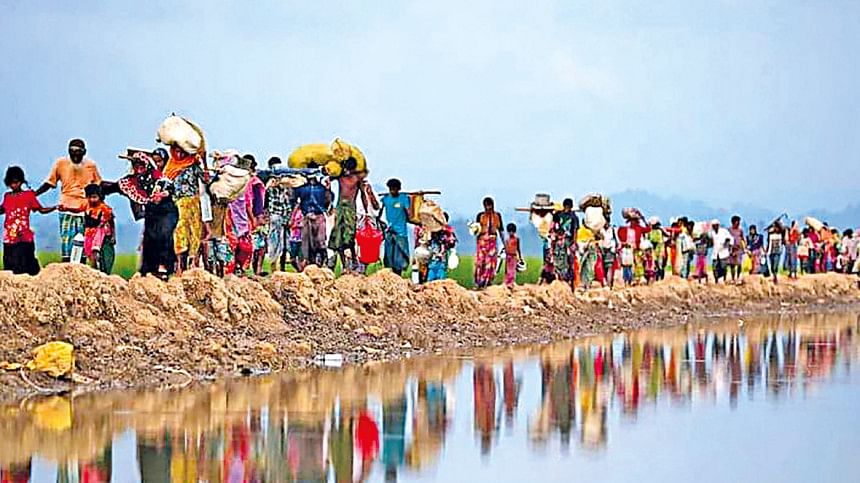1.5 lakh Rohingyas arrived in months

An estimated 1,50,000 new Rohingya have arrived in Bangladesh in the recent months and 50,000 more are expected to join them by this year end, putting further strains on Bangladesh.
The Rohingya continue to flee the Rakhine State of Myanmar due to escalating violence, said the UN World Food Programme in its country brief published on May 19.
With the new arrivals, the total number of Rohingya refugees in Cox's Bazar and Bhashanchar will be close to 12.5 million by the year end.
The highest number of Rohingya, around 7.5 lakh, fled to Bangladesh in 2017 following a military crackdown in 2017.
Despite several attempts, none of them volunteered to return to Myanmar citing lack of safety and guarantee of citizenship.
With the escalation of conflicts between the Myanmar military and Arakan Army since 2023, more Rohingya members fled to Bangladesh, especially in July-August last year.
"This trend of continued arrivals of new Rohingya will create a difficult situation for us," Refugee Relief and Repatriation Commissioner (RRRC) Mohammed Mizanur Rahman, told The Daily Star yesterday.
According to officials handling the Rohingya crisis, 30 to 40 Rohingya members are entering Bangladesh every day, despite increased surveillance by the Border Guard Bangladesh (BGB) to stop their arrivals as the Rohingya are using remote and hard-to-monitor routes.
They said brokers from Rohingya and Bangladeshi communities are helping them reach refugee camps in Teknaf and Ukhiya.
Rohingya who arrived in the Cox's Bazar camps said the Rohingya in Rakhine State are facing different forms of oppression including forced labour and frequent raid in their houses by the Arakan Army, which now controls over 80 percent of Rakhine State.
UNDP in its November 2024 report said the Rakhine State was likely to face a famine-like situation this year.
RRRC Mizanur said over last couple of days nearly 70 Rohingya refugees, who have been pushed in by the Indian authorities, have also been sheltered in the Cox's Bazar Rohingya camps.
"I am worried over the continued pressure imposed on Bangladesh," he said, noting that the funding has already been diminishing and how it fares in the days to come is unknown.
According to the Joint Response Plan 2025, the total need is $934.5 million, but only $140.6 million or 15 percent has so far been met.
In 2024, the total requirement for the Rohingya and host community was $852 million, but only 68 percent of it was met.
As the sole provider of monthly food assistance for the Rohingya population, WFP requires US$86 million to sustain full food rations for those already in the camps for at least a year, along with an additional US$2.9 million per month to support the growing number of new arrivals.
"How is the funding going to be met is a serious question," Mizanur said.

 For all latest news, follow The Daily Star's Google News channel.
For all latest news, follow The Daily Star's Google News channel. 



Comments